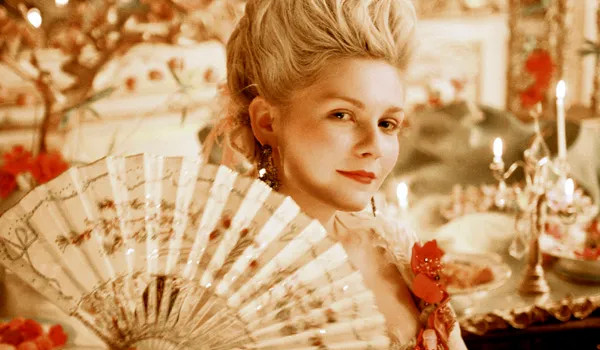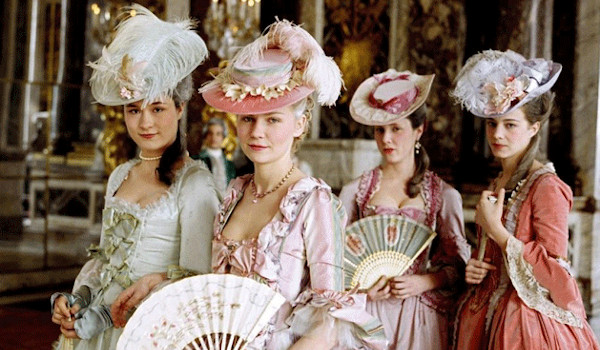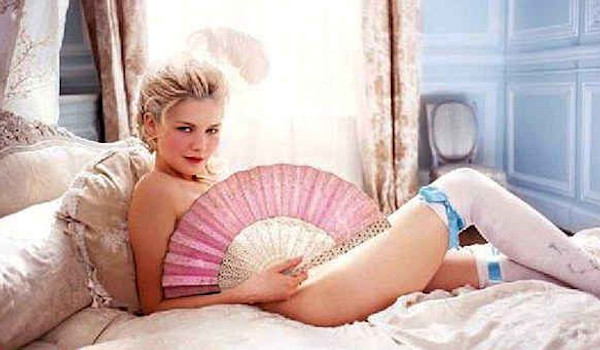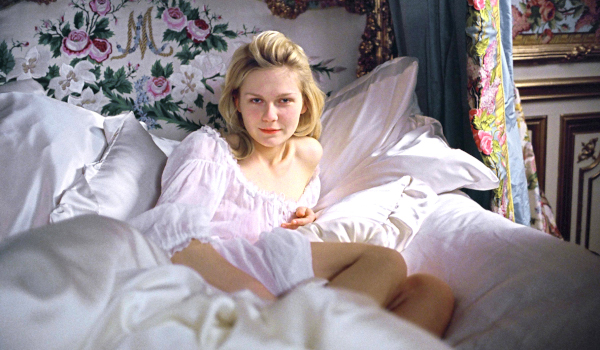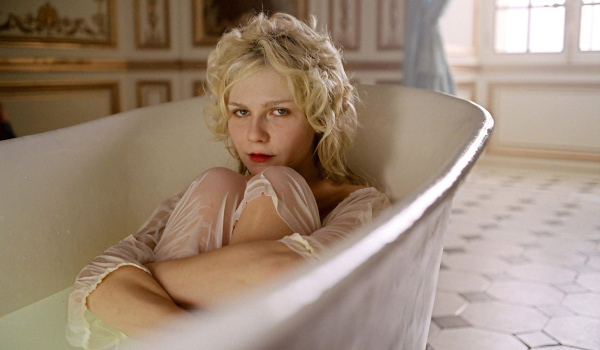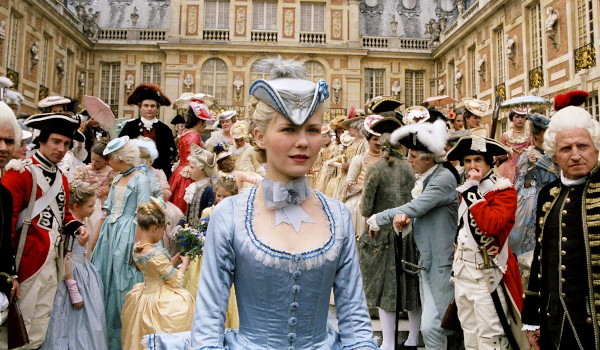- Title: Marie Anoinette
- IMDb: link

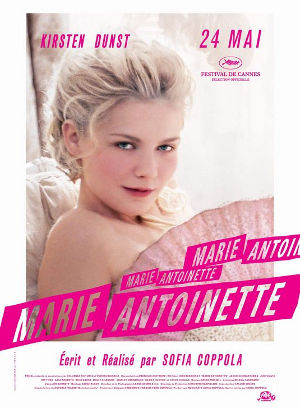 For a historical perspective almost every choice is head-scratching. Kirsten Dunst in the lead role? A supporting cast featuring the likes of Rip Torn, Molly Shannon, and modern pop music? Many thought Marie Antoinette was going to be a disaster. Well, let me tell you a little secret for those of you thinking Sofia Coppola was ready to stumble with her third film. Not only does Marie Antoinette not fail, but Coppola produces one of the most original films of the year, in fact of our time. Is it a traditional historical perspective? No, it’s something much more interesting, that defies all expectations, and leaves us wondering if Kirsten Dunst might actually have given the best performance in films this year.
For a historical perspective almost every choice is head-scratching. Kirsten Dunst in the lead role? A supporting cast featuring the likes of Rip Torn, Molly Shannon, and modern pop music? Many thought Marie Antoinette was going to be a disaster. Well, let me tell you a little secret for those of you thinking Sofia Coppola was ready to stumble with her third film. Not only does Marie Antoinette not fail, but Coppola produces one of the most original films of the year, in fact of our time. Is it a traditional historical perspective? No, it’s something much more interesting, that defies all expectations, and leaves us wondering if Kirsten Dunst might actually have given the best performance in films this year.
What Sofia Coppola decides to give us is an emotional tale of a fragile naïve young woman, sheltered from the realities of the world, lost in the lush settings Versailles, and trapped in a world of societal customs, manner, procedures, and a marriage made out of an alliance between two nations but lacking in intimacy.
Young Marie Antoinette (Kirsten Dusnt) leaves her native Austria at the age of 15 to be married to Louis XVI (Jason Schwartzman), heir to the throne of France. The marriage is one of political wrangling and important alliances between the two countries. It is hoped such a union will create a stable alliance.
Let’s start with what will be a common complaint for some – the movie is about nothing. Well, that’s the point. Coppola carefully recreates the world and endless days of luxury, mindless decadence, and absurd tradition that Marie Antoinette was forced into and which she became Queen. As such, there’s a timelessness quality and almost fairy tale air to her world.
It’s not an historical perspective on the reign of Louis XVI and Marie Antoinette. Nor is it an indictment against the excess of Versailles. Nor is it really a character study.
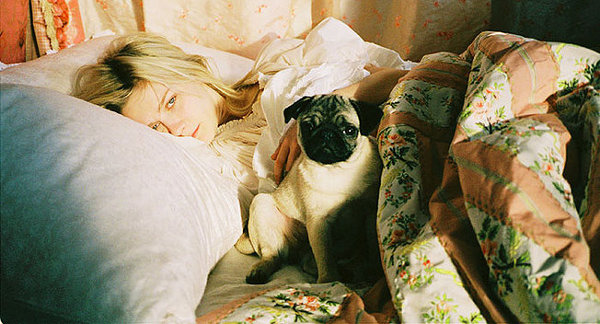
So what is it? Well, that’s harder to answer, but that’s what you came for, so I’ll do my best to try and give you an answer that satisfies.
Sofia Coppola decides to give us Marie Antoinette as she must have been, a young girl without the instinct or desire to rule, trapped in a gilded cage, ignored by her husband, with her only outlet to enjoy the extravagance hoisted upon her.
The film is a snapshot, an emotional perspective of a young woman who’s life was so far removed from reality she could scarcely understand her tragic end. It’s a story about disappointments, desires, fears, loves, and understanding both the seriousness and silliness of nobility equally.
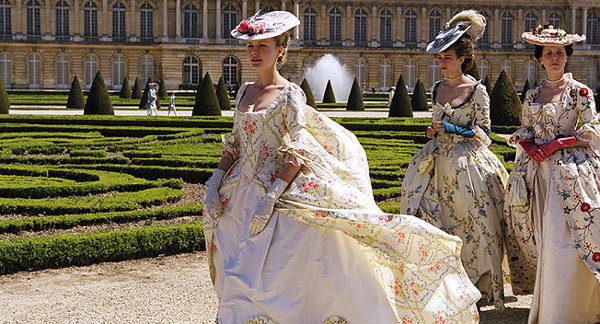
Kirsten Dunst gives the performance of her life. Here I’m going to make my first shocking statement. I’m going to mention Kirsten Dusnt and Oscar in the same sentence. I doubt she will be nominated, let alone win, but what she does here deserves recognition. The film is entirely her, there’s little actual plot to fall back on so the film rests firmly on her shoulders. And she succeeds in presenting the delicate heart, the fragile porcelain doll, and the vivacious spirit that is the heart and soul of this character and this film. Dunst doesn’t so much portray this version of Marie Antoinette, but instead overtakes it and inhabits the role.
One rule for a great performance – after viewing the film ask yourself if you could think of anyone else performing that role as well or better in the film you just watched. The answer here is obviously no.
I was surprised by the casting, but from Coppola’s work with her in The Virgin Suicides I knew there was a reason for it. Dunst gives Marie a vivacious spirit, but also a sense of fragile naivete that come together to form the center of this character. Like the film’s other “interesting” casting choices, Molly Shannon and Rip Torn, on paper it seems odd at best, but Coppola knew the type of film she was making and did well in choosing her actors.
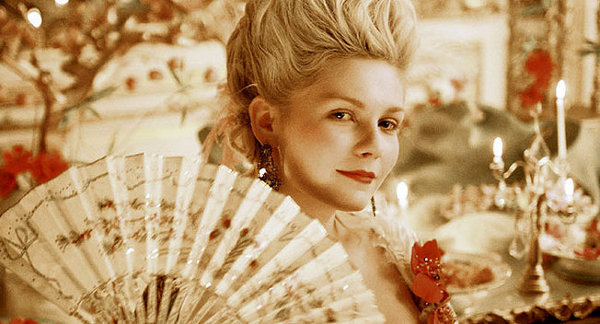
The film is shot in lush surroundings with an exquisite eye by cinematographer Lance Acord. Every shot catches the beauty and refinement of the age. To this Coppola adds a mix of opera and modern pop that is quite unlike anything I’ve ever seen or heard before. There are some that may object to this joining of diverse elements, but I’m not one of them. If there’s a secret here it might be that Coppola envisioned Marie Antoinette as a modern girl playing the part of a queen in all her fancy, but at the heart is a modern teenager who just wants to turn up the radio and dance.
Coppola has now given us three films, a small body of work, but each done with loving and exacting detail. It’s not a large body of work, but it is now a body of work that can be judged and compared to other filmmakers. I’m a fan, and to tell you how much of one I’ll simply say this – I prefer the daughter’s body of work to that of her father. I can think of no higher compliment to give her.
Marie Antoinette is an unusual and delightful piece of filmmaking unlike anything I’ve ever seen. The style and focus of the picture may be considered by some to be fluff, or empty, but what Sofia Coppola set out to create was an emotional tale of a young woman of great joys and unhappiness secluded from reality by the custom and wealth of her rank. It’s beautiful to watch, you can tap you toe to the beat, and, above all else, it’s lead character provides a heart that makes the film worth caring about. Yeah, I’m a fan Ms. Coppola; please keep making movies.
Watch the trailer